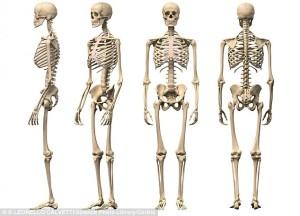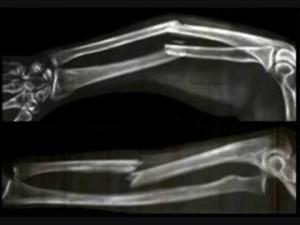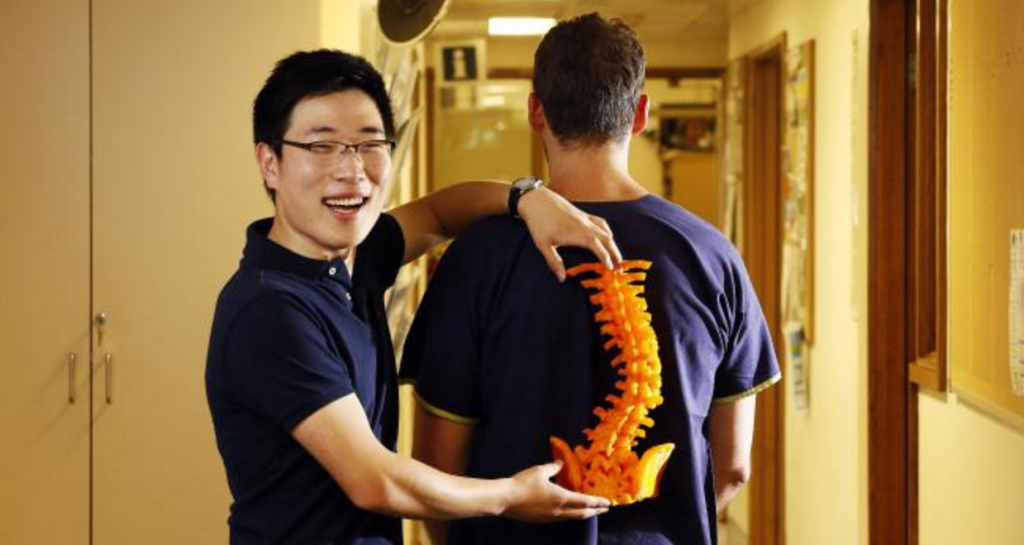 There have been a lot of news stories lately about advanced 3D modeling software and 3D printing technology being used to aid doctors with surgical pre-planning or to help them understand the nature of a specific patient’s needs. 3D printed hearts, 3D printed livers and even a highly realistic 3D printed brain have all been found to be invaluable in helping doctors make difficult or complex surgeries faster, safer and more precise. But 3D printing isn’t just a useful surgical pre-planning tool; it is also a great way for doctors to help their patients understand how exactly they are planning to help them.
There have been a lot of news stories lately about advanced 3D modeling software and 3D printing technology being used to aid doctors with surgical pre-planning or to help them understand the nature of a specific patient’s needs. 3D printed hearts, 3D printed livers and even a highly realistic 3D printed brain have all been found to be invaluable in helping doctors make difficult or complex surgeries faster, safer and more precise. But 3D printing isn’t just a useful surgical pre-planning tool; it is also a great way for doctors to help their patients understand how exactly they are planning to help them.
Depending on the procedure, it is often quite common for many patients to have very little idea of what exactly is going to be done to them. Not only is it difficult to explain complicated surgeries to patients who may not have a full understanding of how the body works, but many doctors, while quite talented surgeons, simply may not have the ability to clearly explain the problems that they are facing during the process in a way that the patient can understand. This is often a source of anxiety for many people, and it could potentially lead them to make medical decisions that may not be in their best interest.
 But a pair of doctors from Australia’s Peninsula Health have been exploring ways to better help their patients understand the nature of their injuries or health issues by using 3D printed models as visual aids. The idea is a simple one: when a patient may have trouble understanding what exactly is wrong with them, and how it needs to be fixed the doctors can use MRI and CT scan data to 3D print exact copies of their tumors or even detailed recreations of their broken bones before they have surgery. 3D printing can also help patients understand what happens after the surgery, for instance if they have a tumor on their jawbone, the doctors can print that and then use software to remove the tumor and print a second jawbone that can be compared to the first.
But a pair of doctors from Australia’s Peninsula Health have been exploring ways to better help their patients understand the nature of their injuries or health issues by using 3D printed models as visual aids. The idea is a simple one: when a patient may have trouble understanding what exactly is wrong with them, and how it needs to be fixed the doctors can use MRI and CT scan data to 3D print exact copies of their tumors or even detailed recreations of their broken bones before they have surgery. 3D printing can also help patients understand what happens after the surgery, for instance if they have a tumor on their jawbone, the doctors can print that and then use software to remove the tumor and print a second jawbone that can be compared to the first.
“If you can print them you can hold them and turn them around in your hand … it’s an exact model — it’s less than 1 per cent off and that’s not clinically relevant. We can subtract (the tumour off) and it leaves you with the underlying jaw without the tumour … for patient education and pre-operative planning it’s really good,” director of surgical research Associate Professor Hunter-Smith explained to the Herald Sun.
Amusingly, Hunter-Smith and a junior doctor at the hospital, Michael Chae, weren’t even in the same room when they both had the idea at the same time. Both doctors were looking through a medical catalog and stumbled on an ad for a discounted 3D printer that would allow them to create visual aids for their patients. So with the approval of Hunter-Smith, the 26-year-old Dr. Chae has taken the lead in helping expand the hospital’s use of 3D printing for not only research, but improving overall patient care.
“Myself and Professor Hunter-Smith read an advert that there was a 3D printer on the market for only $1400 … then the emails started. Our focus of research here at Peninsula Health in Frankston is multifold — but the main point of our work is to make this technology available at the bedside. We’ve shown that 3D printing is helping for planning surgeries and for education. Hopefully it will translate into better outcomes for patients but we don’t know that yet — it’s bit early,” said Dr Chae.
Helping patients better visualize the procedure that they will be having done to them will hopefully help them make better, more informed medical decisions. But patients aren’t the only ones who benefit from these types of 3D visualizations. Doctors for instance, can 3D print broken or even shattered bones and practice reconstructing them before they ever open the patient up. Not only does it give them a better idea of how to put the bones back together, but it reduces the amount of time they need to do so, as well as potentially preventing further surgeries. Discuss this story in the 3D Printing and Medicine forum thread on 3DPB.com.
Subscribe to Our Email Newsletter
Stay up-to-date on all the latest news from the 3D printing industry and receive information and offers from third party vendors.
Print Services
Upload your 3D Models and get them printed quickly and efficiently.
You May Also Like
U.S. Navy Lab Uses 3D Printing to Reduce Tooling Lead Time By Over 90%
The F-35 Lightning II Joint Program Office (JPO), responsible for life-cycle management of the key fifth-generation joint strike fighter (JSF) system used by the U.S., its allies, and its partners,...
Etsy Design Rule Change Reduces Selection of 3D Printed Goods
Online marketplace Etsy has implemented a rule change requiring all 3D printed goods on the site to be original designs. The update to the site’s Creativity Standards states, ¨Items produced using...
Honeywell Qualifies 6K Additive’s Nickel 718 for 3D Printed Aerospace & Defense Parts
6K Additive is renowned for manufacturing sustainable additive manufacturing (AM) powder, and offers a wide portfolio of premium metal and alloy powders that include titanium, copper, stainless steel, and nickel,...
MetalWorm Sells WAAM Systems to Research Institutes in Brazil and Malaysia
Turkish WAAM firm MetalWorm has sold a system in Malaysia and another in Brazil. This is an excellent example of a few emerging trends in additive. Firstly, WAAM was experimented...


































